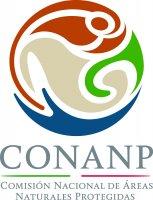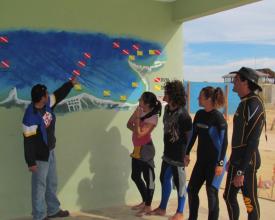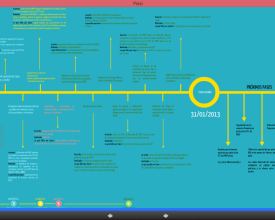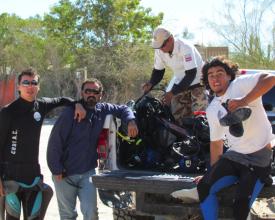
El turismo como motor del cambio
Solución completa

Los operadores de buceo de Cabo Pulmo educan a los buceadores sobre el arrecife
CONANP archive
El Programa de Uso Público y Ocio (PURP) aborda el problema de las actividades recreativas destructivas en el Parque Nacional de Cabo Pulmo. El Programa proporciona directrices a los operadores turísticos locales para reducir los impactos negativos de las actividades turísticas en los hábitats del Parque y garantiza su sostenibilidad económica. Como resultado, se establecen límites a los deportes acuáticos practicados en el Parque, lo que reduce drásticamente los impactos en los arrecifes derivados de estas actividades.
Última actualización: 30 Sep 2020
4203 Vistas
Contexto
Défis à relever
Aumento de las presiones sobre el Parque Nacional de Cabo Pulmo por el crecimiento del sector turístico -Se espera que las actividades turísticas dentro del Parque Nacional de Cabo Pulmo aumenten significativamente -Mitigar los efectos del aumento de visitas organizando actividades turísticas en el Parque a través del Programa de Uso Público y Recreación (PURP) -Para evitar impactos negativos en el arrecife, el aumento de visitantes debe ser regulado efectivamente a través de operadores turísticos y vigilancia y monitoreo permanente.
Ubicación
México
América Central
Procesar
Resumen del proceso
La inclusión de los operadores turísticos en las tareas de monitoreo es fundamental para asegurar acciones de gestión adaptativa. El monitoreo permite tomar decisiones sobre el uso del parque, implementar acciones de restauración y ayudar a construir capacidades entre los operadores turísticos. Así, este BB es transversal a todo el proyecto, y representa una clave para el éxito de los objetivos de uso responsable y conservación. Además, el monitoreo conecta a la gente de la comunidad (incluyendo operadores turísticos, guías de buceo, individuos, estudiantes, voluntarios) con la dirección que el AMP está desarrollando, creando un excelente canal para comunicar el "estado" del parque, y las adopciones de las regulaciones.
Bloques de construcción
Determinación de la capacidad de carga
La recopilación de datos técnicos para evaluar la capacidad de carga es necesaria para iniciar un proceso participativo con los operadores turísticos. Estos datos eran importantes para convencer a los operadores locales de los impactos potenciales de las actividades recreativas y para convencerles de mantener un nivel de uso bajo en el arrecife y promover un servicio de alta calidad para los turistas. La creación de un entendimiento conjunto de los impactos potenciales de las actividades recreativas marinas incluye, por tanto, reuniones participativas con los operadores turísticos locales para explicarles los impactos de las actividades recreativas intensivas y las amenazas que éstas suponen para sus medios de vida, con el fin de desarrollar el proceso de planificación.
Factores facilitadores
- Apoyo económico y técnico de las ONG, la comunidad académica y los operadores turísticos para el estudio de la capacidad de carga - Buen momento y aceptación por parte de la comunidad local para desarrollar el programa de uso público debido a las amenazas de desarrollar un megaproyecto turístico en la zona
Lección aprendida
- Participación abierta, es importante invitar a todas las partes implicadas - Facilitación experta del proceso participativo para evitar conflictos con la autoridad y garantizar el respeto y la apropiación del programa
Participación de las partes interesadas locales
La apropiación local del programa de uso público se consigue a través de una amplia participación que incluye consultas, reuniones, la creación de acuerdos, así como la "extracción" de la experiencia y los conocimientos locales. El apoyo a la supervisión por parte de la comunidad local es esencial a lo largo de todo el proceso de elaboración del Programa de Uso Público y Ocio (PURP) con vistas a garantizar su aceptación y aplicación por parte de los operadores turísticos locales.
Factores facilitadores
- Amenazas de los megaproyectos turísticos y posibilidad de aumentar los ingresos locales gracias al programa.
- Prioridad de los operadores locales para los permisos turísticos
Lección aprendida
- Paciencia durante el proceso y pragmatismo: es importante equilibrar los diferentes intereses.
Seguimiento participativo
Los operadores turísticos y los guardas del parque deben recopilar datos sobre indicadores biofísicos y económicos para garantizar que no se sobrepasen los límites. Estos datos también permiten adaptar las acciones de gestión en el parque. Los indicadores económicos miden los ingresos por cada actividad, los empresarios generados y la disposición a pagar (turista).
Factores facilitadores
- Apoyo del mundo académico y equipo necesario para recopilar los datos (embarcaciones, equipo de buceo).
Lección aprendida
- promover el respeto y fomentar las buenas relaciones entre los operadores para evitar conflictos y mejorar la cooperación
Impactos
- Reducción de las actividades recreativas en cada punto de inmersión y del impacto en los arrecifes de coral. - Mayor satisfacción de los turistas por las actividades recreativas experimentadas en el parque respetando la capacidad de carga. - Mayor calidad del servicio y aumento gradual de los ingresos de los operadores turísticos.
Beneficiarios
operadores turísticos locales, gestores de parques, turistas.
Historia
El programa ha ayudado a la comunidad local a comprender la importancia de organizarse y regular sus recursos naturales. A través del ejercicio, los operadores turísticos comprendieron que no es necesario tener muchos turistas para aumentar sus ingresos. Ahora están orgullosos de prestar servicios de alta calidad a los turistas que visitan el parque, ofreciéndoles experiencias inolvidables en las que pueden ver más peces que buceadores. La comunidad local está muy orgullosa del éxito del parque y de la posibilidad de mostrar su belleza a turistas de todo el mundo. La comunidad entiende ahora que la organización y el diálogo son esenciales para responder a las amenazas de agentes externos y ayudarán a garantizar que los recursos estén disponibles para las generaciones venideras.


